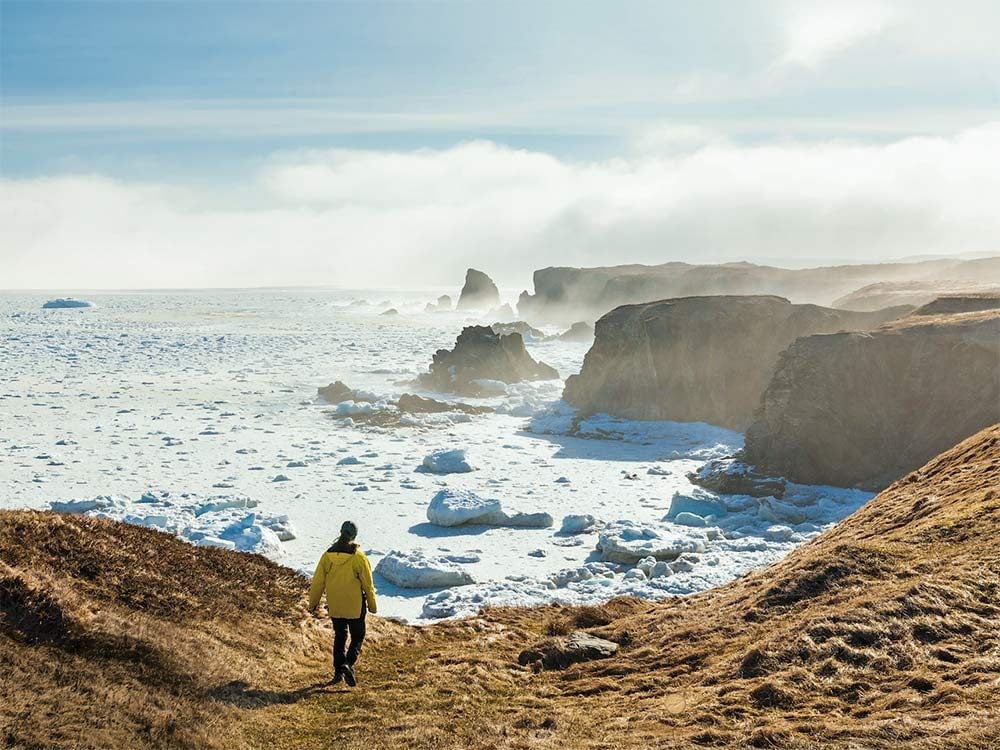
A Once-in-a-Lifetime Cross-Canada Adventure
Thanks to the photo art printing company Posterjack, I was given the opportunity to travel across Canada on a once-in-a-lifetime trip, capturing images of our beautiful country as we celebrated its 150th birthday. In 2017, my girlfriend Laura and I flew from Toronto to Calgary, where we picked up our RV and set out on our cross-country trip.
Here are 40 things to do in Calgary that will boost “Cowtown” to the top of your bucket list.
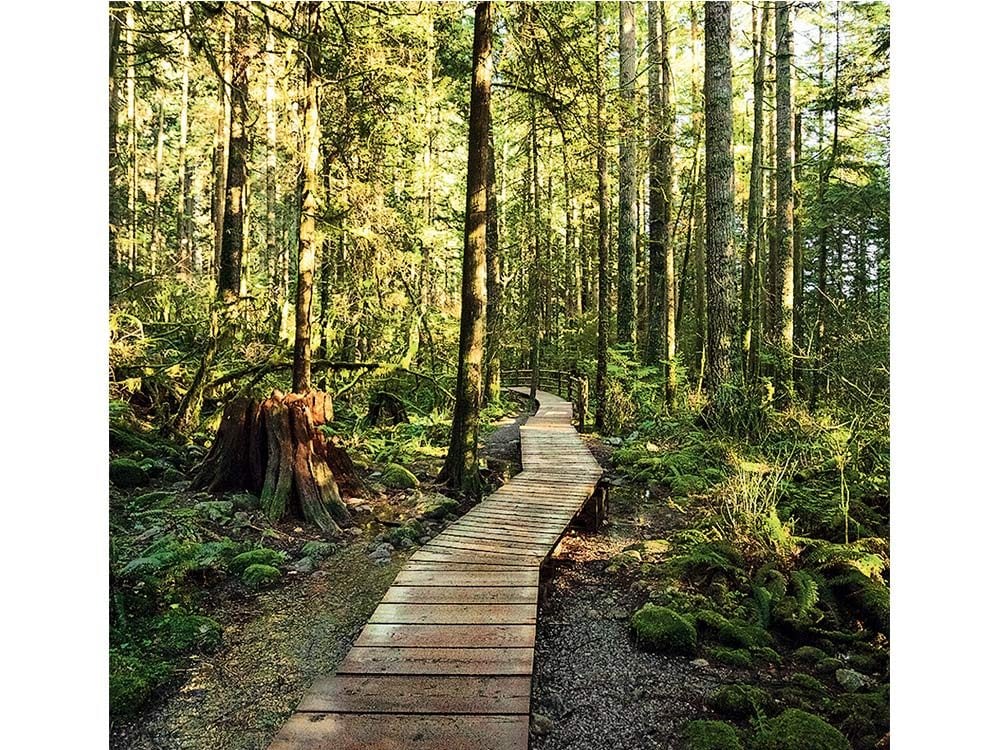
Lynn Canyon Park in North Vancouver, B.C.
Taking a deep breath of crisp, cool mountain air, I stood in the almost absolute silence, not a sound of civilization—only the quiet rumble of an avalanche in the distance and the wind passing through the valleys. Laura stood breathless beside me. This was the first time she had ever seen a mountain in person. Looking out over the Rockies, I was amazed, realizing this was just the first of many natural Canadian landscapes we would experience in the coming weeks, equalled only by the unexpected surprises that lay ahead.
With the Rockies in our rearview mirror, we drove southwest towards the coast of British Columbia and the lush rainforests of the Pacific Northwest. After arriving late in the night, we woke to the refreshing ambience of dew-covered moss and lush greenery. Just a few metres into the forest, I could feel the outside world slip away in the dense woods, dampening the sounds beyond the trees. I was left with only the sound of raindrops hitting my hood and the crack of a twig underfoot.
Check out our top 50 natural wonders to see before you die.
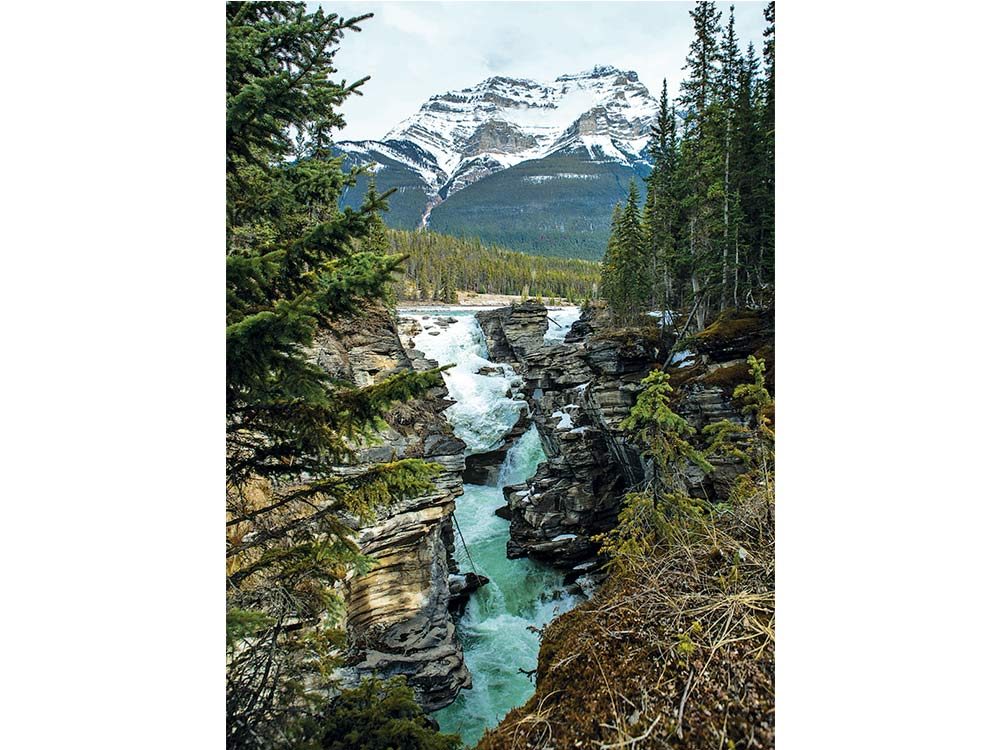
Athabasca Falls in Alberta
Our time on the coast was brief, as we had a lot of ground still to cover. We moved east through southern British Columbia, away from the lush rainforests into the dry heat of the Osoyoos Desert, and through the sprawling vineyards of the Okanagan Valley.
We’re counting down 10 of the best things to do in British Columbia.
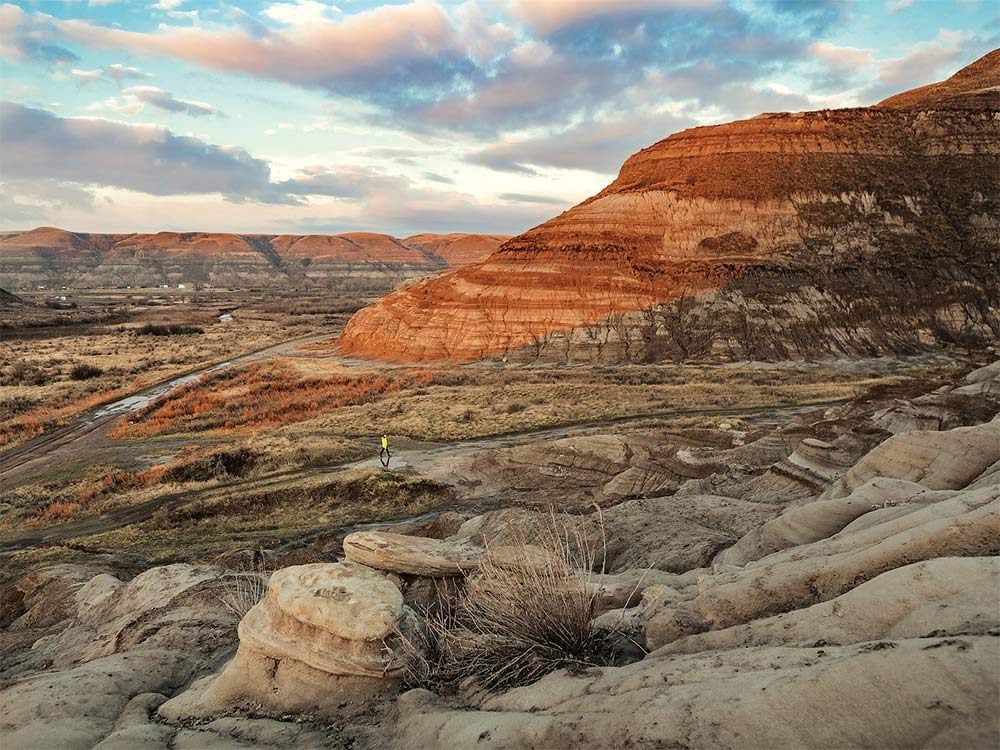
Sunrise in Drumheller, Alberta
We continued east and the mountains began to diminish until they were no more than rolling hills. What soon surrounded us was something else entirely. Vegetation was becoming more and more scarce and once distant hills were transformed into extraordinary canyons, mesas, ravines and hoodoos that extended to the horizon in all directions. These landforms of red dirt concealed millions of years of history from when dinosaurs still roamed the Earth. What little knowledge I had of this area prior to arriving only heightened my curiosity and desire to explore this Martian-like landscape.
Here are six of the most exhilarating options from all regions of Canada.
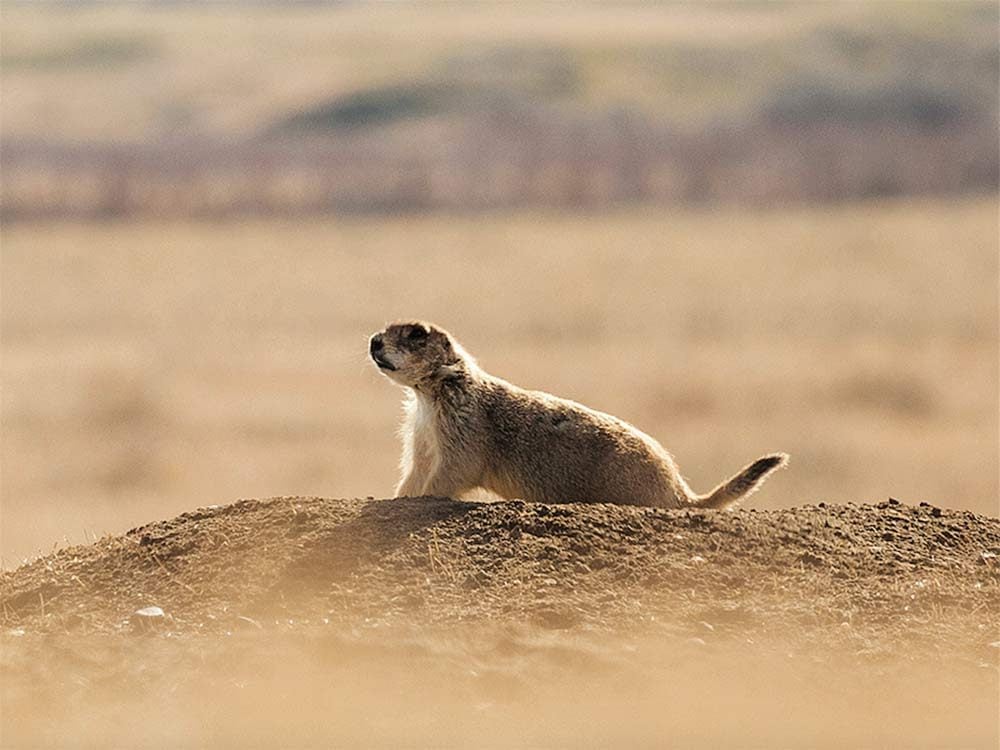
Grasslands National Park in Saskatchewan
The Badlands seemed endless, stretching through Alberta and into Saskatchewan. When we finally arrived in the grasslands, we were greeted by thousands of tiny gophers scurrying over the plains. Leaving our small friends behind, we continued through the grasslands into Manitoba, where a mother bison and her calf stood idly, watching as we drove past.
Check out this photographer’s journey through Saskatchewan.
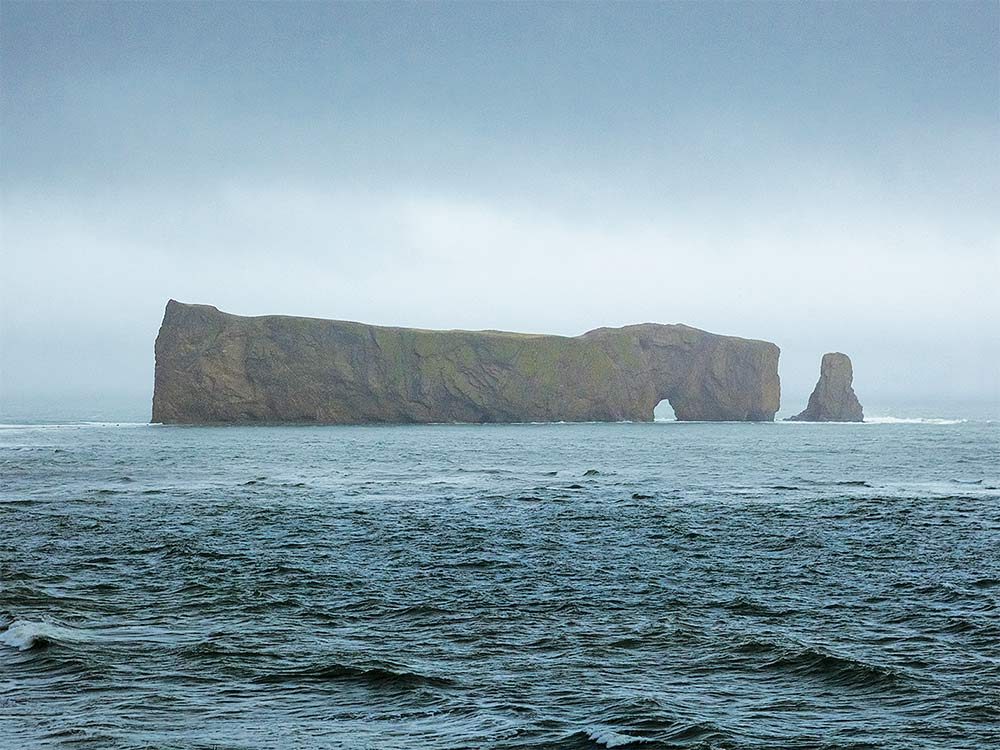
Bonaventure Island in Quebec
Our days spent driving became longer. We were following the road southeast along the coastlines of the Great Lakes. We followed the St. Lawrence River along its coastline, through small towns, bustling cities and the historic centre of Quebec City. Soon, the highways turned into winding two-lane roads, just a stone’s throw from the water, with rocky cliffs towering over the road. The spring weather turned what were once dribbling spouts of water into raging falls, as swelling streams cascaded over cliffs right beside the highway.
Hitting the slopes in Quebec this season? These 20 French phrases will come in handy.
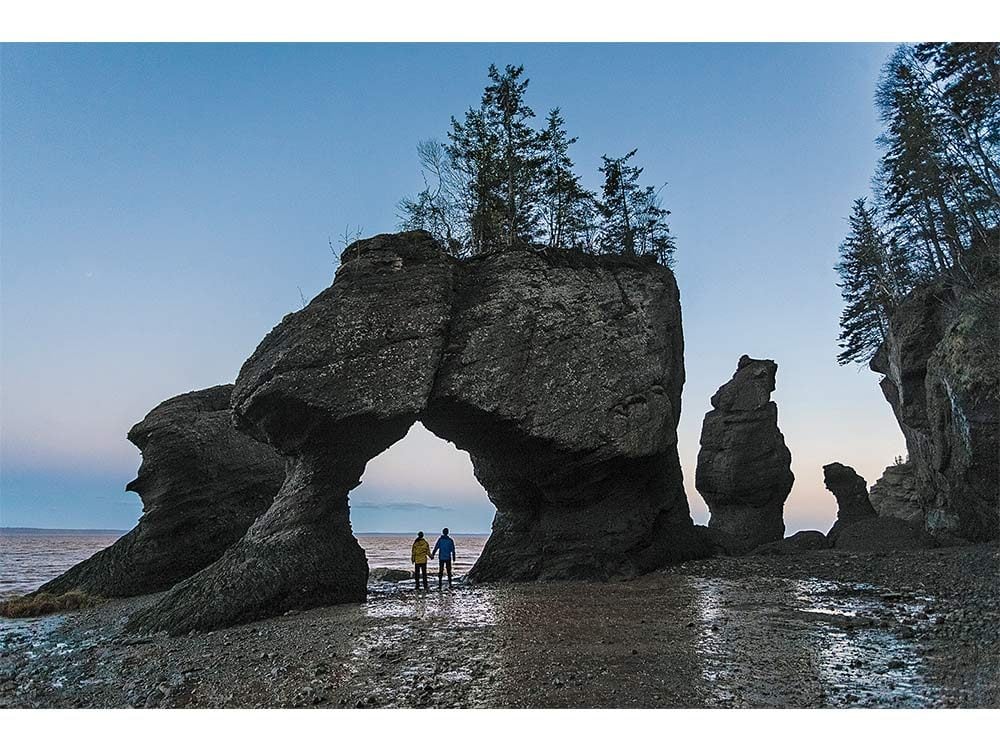
Hopewell Rocks in New Brunswick
We had made it to the end of the Gaspé Peninsula when the bad weather began to intensify. Our camper was shaken by high winds and pelted by horizontal rain. The poor driving conditions forced us to prematurely bring our day to an end. IN the morning, the fog had lifted, revealing the stunning coastline that had been concealed the day before. We took this opportunity to follow the coast south, towards New Brunswick.
We arrived in the Bay of Fundy, known for having the highest tides in the world, and made our way to Hopewell Rocks at low tide, just as the sun was setting. It was hard to imagine the beach we were walking on was the ocean floor and, when the tide was high, would be metres under water.
Discover 10 things to do in St. Andrews, New Brunswick.
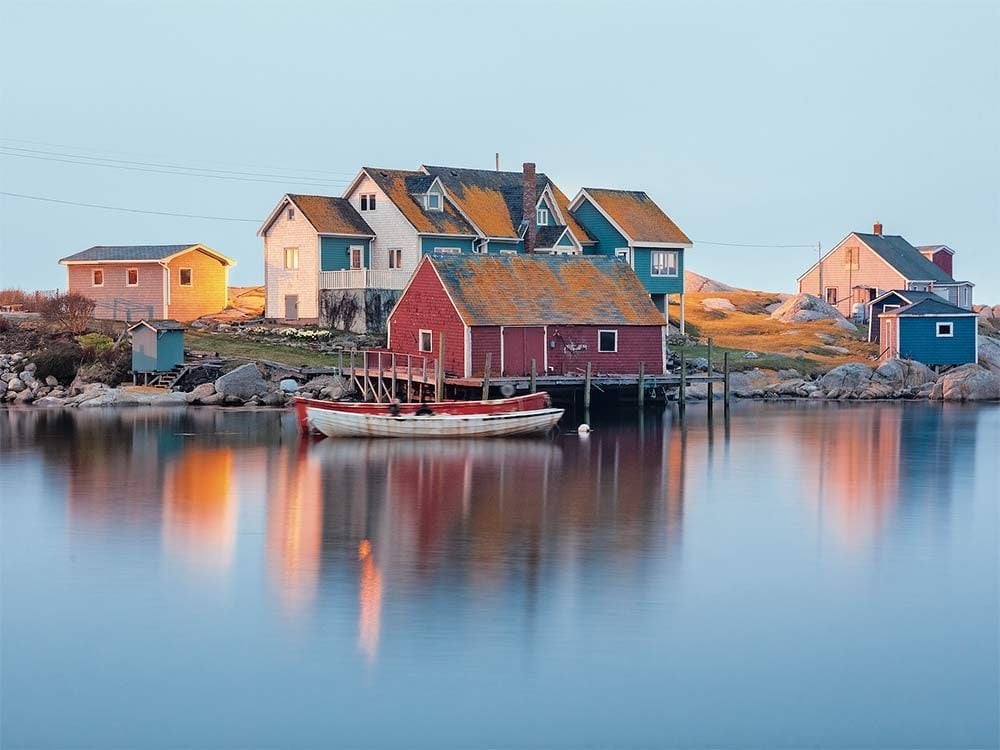
Peggy’s Cove in Nova Scotia
The only thing separating us from our next province was the 13-kilometre-long Confederation Bridge ahead of us. The clear skies disappeared soon after and we were coasting along red-dirt country roads in the rain. Our destination? A vague point on a map, serving as an access point to a beach on the north shore of Prince Edward Island. Heading down the beach, our path began to narrow between the water and a rock wall and we finally found the small cove we were looking for. A sea stack, resembling a large inverted cone, lay isolated, partially submerged by the tide.
After a couple of days of exploring Nova Scotia’s unique beaches and small fishing villages, our route took us north along the scenic Cabot Trail of Cape Breton Island. Even with our ferry set to leave in a few hours, I couldn’t help but stop at each vista point to admire the incredible sunset, with its vibrant purple tones illuminating the sky.
Check out Canada’s 10 essential east coast experiences.
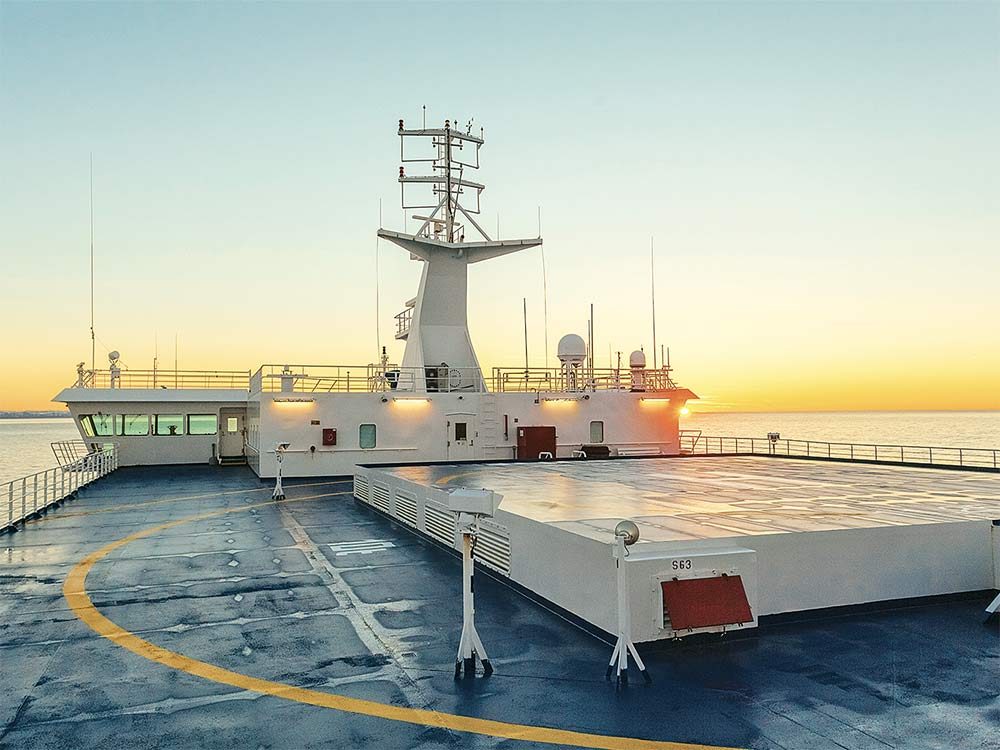
Aboard the Marine Atlantic Ferry
The next day, we set out in search of an iceberg. We hoped to find at least a few fallen chunks from the Greenland glaciers floating in the bay. Instead, the harbour was packed tight with pieces of ice flowing and bobbing with each crashing wave, glistening like liquid gold beneath the setting sun. Not far away, a large iceberg was twisting and turning in the swells, taking the full force of each crashing wave. With the setting sun casting a soft pink hue across the sky, Laura and I stood still, lost in a moment we would not soon forget.
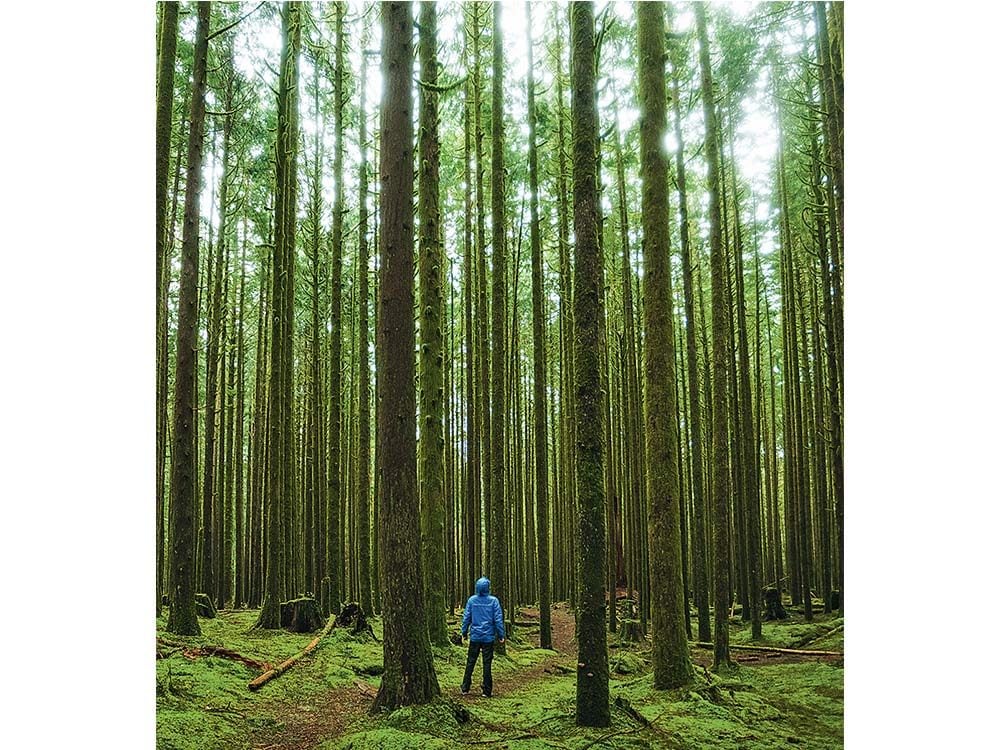
Cape Spear in St. John’s, N.L.
Our last day of the trip began with warm, and oddly refreshing, rain in St. John’s, N.L. We took our final breath of the ocean air before heading to the airpot to fly home to Toronto. It was May 15—in less than a month, we had driven more than 15,000 kilometres, experienced the incomparable natural settings of every Canadian province and discovered things about our country we couldn’t have imagined. Still, we knew we had barely scratched the surface.
Next, check out 10 of the most beautiful bridges in Canada.